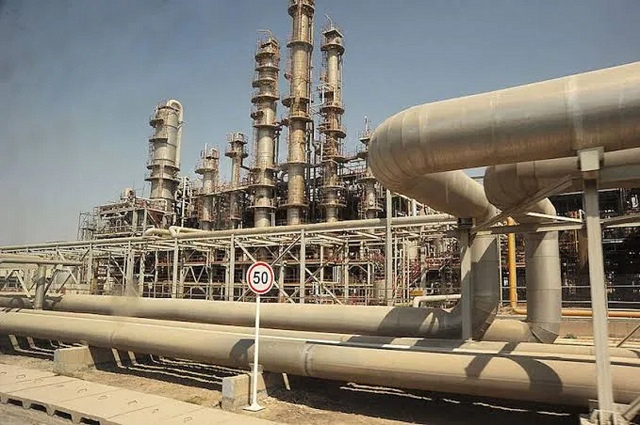Nigeria has had a substantial growth in its oil drilling activities in January 2022, compared to the last quarter of 2021, with onshore production rising 12 percent, while deep water and shallow water activities increased by 5 and 7 percent respectively.
It was a marked improvement when put side by side in the last quarter of 2021 when onshore production was down 36 percent, deepwater 28 percent, and shallow water 20 percent.
But in contrast, in January, according to a report by Renaissance Capital, a frontiers market investment bank, onshore production was only down 24 percent, deepwater 23 percent, and shallow water 13 percent.
However, there are still issues of sustainability of the new-found rhythm by the Nigerian National Petroleum Company (NNPC) and its partners which have lagged for months in terms of meeting its allocated quota. “It is too early to say if these levels can be sustained,” the RenCap analysts noted.
In January 2022, most major terminals experienced a sharp recovery in output, the report said, with Forcados, in particular, reaching pre-COVID levels, but with Bonny still lagging due to downtime at the Trans-Niger pipeline (TNP).
Nigeria’s aging infrastructure, downtime, and crude theft are chronic challenges for the onshore sector as it has been unable to meet its Organisation of Petroleum Exporting Countries (OPEC) cut.
According to the OPEC’s Monthly Oil Market Report (MOMR) for the month, the country managed to pump 1.399 million BPDout of the total allocation, quoting primary sources.
This was in contrast to December 2021, when it pumped 1.197 million barrels per day, and November when it was only able to produce 1.275 million BPD.
Promises by the Minister of State, Mr. Timipre Sylva, and the NNPC Group Managing Director, Mallam Mele Kyari, that the country would hit between 1.7 million BPD and 1.8 million BPD by the end of 2021 remained largely unrealized.
For months, Nigeria has been unable to meet its required share of the OPEC quota, being 1.683 million BPD in December, 1.701 million BPD in February, and now 1.718 in March.
Poor upstream infrastructure, sabotage, oil theft as well as lack of investment have been blamed for the ongoing default as the country’s oil sector is facing an unprecedented level of under-investment, with declines reflecting a near halt of upstream investment across all terrains since the Covid-19 pandemic outbreak.
“The near-term project pipeline screens thin, with Total’s Ikike (40kbopd), Amni’s Tubu (30kbopd), and Shell/Seplat’s ANOH (30-40kbopd of condensates) some of the scheduled 2022 start-ups,” it added.
Quoting Rystad, an oil and gas consultancy, the report stated that it is estimated that Nigeria’s project pipelines would add up to 100kbopd of production by the mid-2020s, which is not enough to offset current declines.
It explained that the under-investment and chronic infrastructure issues plaguing Nigeria’s oil sector manifested in a multi-decade production low in December 2021.
“The recovery in January offers some optimism, we think, but the outlook remains uncertain,” Renaissance Capital said.
It stated that Shell and Exxon’s announcement of divestment plans in Nigeria if completed would transfer most of Nigeria’s oil production from the onshore and shallow water terrains (65 percent of total production in 2021) to indigenous control.
“Whether or not the operatorship succession, if it happens, will result in a Nigerian oil sector renaissance remains to be seen, but we believe the stakes are high for Nigeria’s oil sector,” it said.
It added that Nigeria’s production outlook has not appeared as uncertain as it does now, as most of the production operatorship control is set to change hands in onshore and shallow terrains, creating uncertainty about future investment.
“We believe securing financing for the small/mid-sized indigenous players to complete the transactions will be challenging, let alone investing further for production growth in aging assets of undetermined asset integrity.
“Add integration and operational risks to the mix and one can see why any of these deals might potentially be ‘too big to chew’ for any indigenous E&P. We expect 2022 production to be within the 1.601.75mmbopd range and our longer-term outlook is dependent on the level of investment.
“However, in the absence of major project start-up visibility, even with moderate investments, we expect declines to take their toll on production. With the likely start-up of new deepwater projects post-2025, we believe that Nigeria’s production could average <1.5mmbopd by the second half of this decade,” the report pointed out.
It singled out Seplat as better positioned among its peers to complete a transaction with either Shell or Exxon, saying it is the best way for investors to gain exposure.
In addition, it mentioned unattractive fiscal terms as one of the negative factors, stressing that Nigeria’s onshore fiscal terms are some of the least attractive globally.













